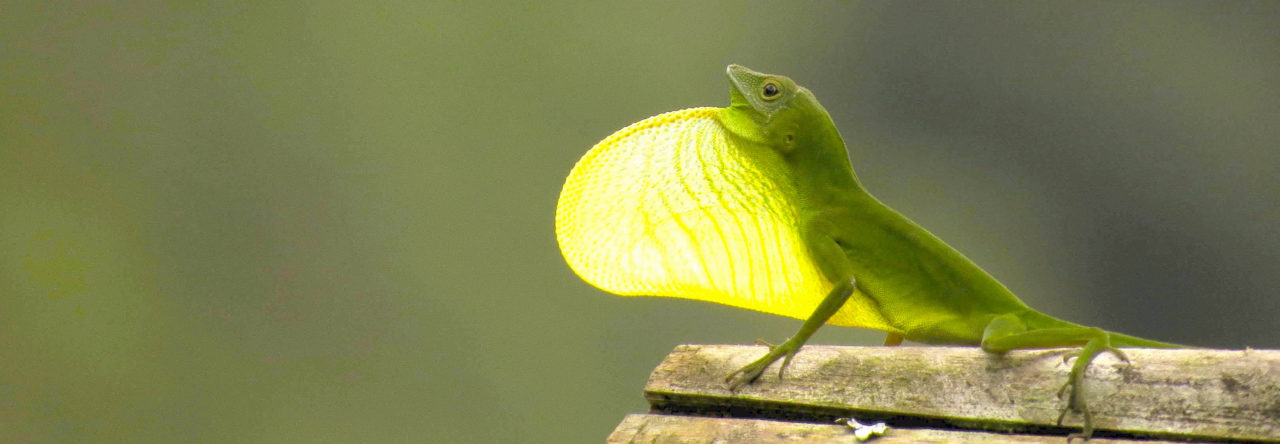
Anthony and Kevin near the golf cart. This inland forest was the tallest we could get access to on the island.
A July trip to the Bahamas to sample Anolis sagrei has been documented in recent posts by Graham Reynolds and Kevin Aviles-Rodriguez. During that trip, Kevin, Anthony Geneva, and I traveled to the island of Rum Cay to collect data on anoles. With a human population of fewer than 50 clustered in an around the southeastern town of Port Nelson, Rum Cay is mostly uninhabited. Access to a majority of the island’s 30 square miles is facilitated by narrow dirt roads, several of which, particularly those on the western half of the island, are overgrown and unnavigable. Our golf cart, well-equipped with off-road tires, was pushed to its limits as we strove to find lizards across several habitat types on the island.
Anolis sagrei was abundant among most of the island’s vegetation including forests, mangroves, and beach scrub. Their mostly red dewlaps appear similar to those we saw on nearby Long Island. In each habitat, the lizards were usually perched within 1 meter of the ground but were occasionally found on the ground or perched higher than 1 meter. One exception was a shrubby forest located at (23.66501, -74.868245) which contained abundant A. sagrei along with incredibly high densities of the San Salvador curlytail lizard, Leiocephalus loxogrammus. Here we didn’t see any A. sagrei on the ground despite being present at the site for several hours on two separate days. Not an easy place to get to, but it would be a great site for studying curlytail behavior and interactions between curlytails and anoles. In our adventures we also encountered several Anolis distichus, with more on that to come in a later post.























